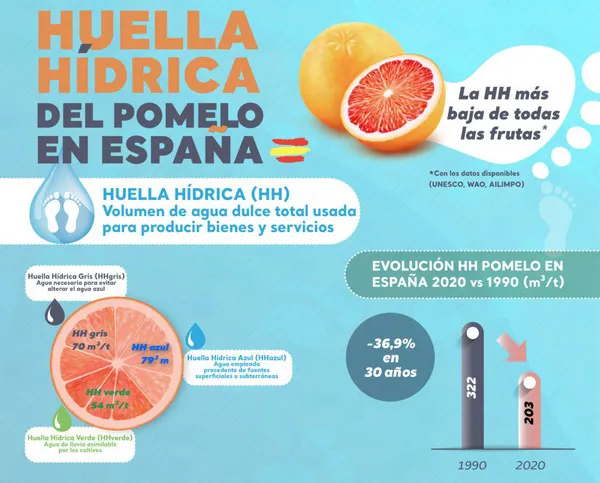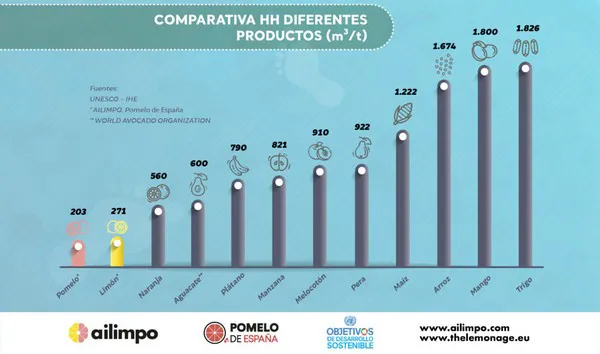Spanish grapefruit has managed to reduce its water footprint to 203 m³/t, positioning itself as the fruit with the lowest water footprint among all the fruit grown in the country, according to the Spanish grapefruit production's water footprint report carried out by the Lemon and Grapefruit Inter-branch Association (AILIMPO).
"Grapefruit cultivation is an example of how the advances in irrigation and fertilization have allowed achieving an optimum water use and management while increasing the productivity of the farms over the last 30 years to obtain a higher production per quantity of water used."
"Calculating a crop's water footprint is part of AILIMPO's sustainability policy in the environmental field, aimed at aligning itself with points 6 and 12 of the United Nations (UN) Sustainable Development Goals (SDGs) to ensure the availability and sustainable management of water and sanitation for all people, and to promote responsible consumption."

This innovative work carried out by the inter-branch organization followed the methodology established by the Water Footprint Network (WFN), a worldwide benchmark organization, and offers information about the water footprint of grapefruit produced in Spain by province. In addition, the data obtained have been compared to the information of other years to see grapefruit's water footprint's evolution over the past 30 years and to contrast it to the footprint of other fruits.
The report quantifies the Spanish grapefruit production's water footprint at about 203 m³/t. Its blue water footprint stood at 79 m³/t, its green water footprint at 54 m³/t, and its grey water footprint at 70 m³/t.
However, despite the positive data collected in the report, Spanish grapefruit producers continue to work to further reduce their water footprint, increasing investments in precision agriculture technologies to maximize productivity and minimize the use of water with different techniques, such as monitoring water in soils, placing quilting plastics in the cultivation lines, covering irrigation ponds, and reducing the use of inputs, among others.

For more information:
AILIMPO
C/ Villaleal, 3
30001 Murcia (España)
Tel.: +34 968 216 619
www.ailimpo.com
